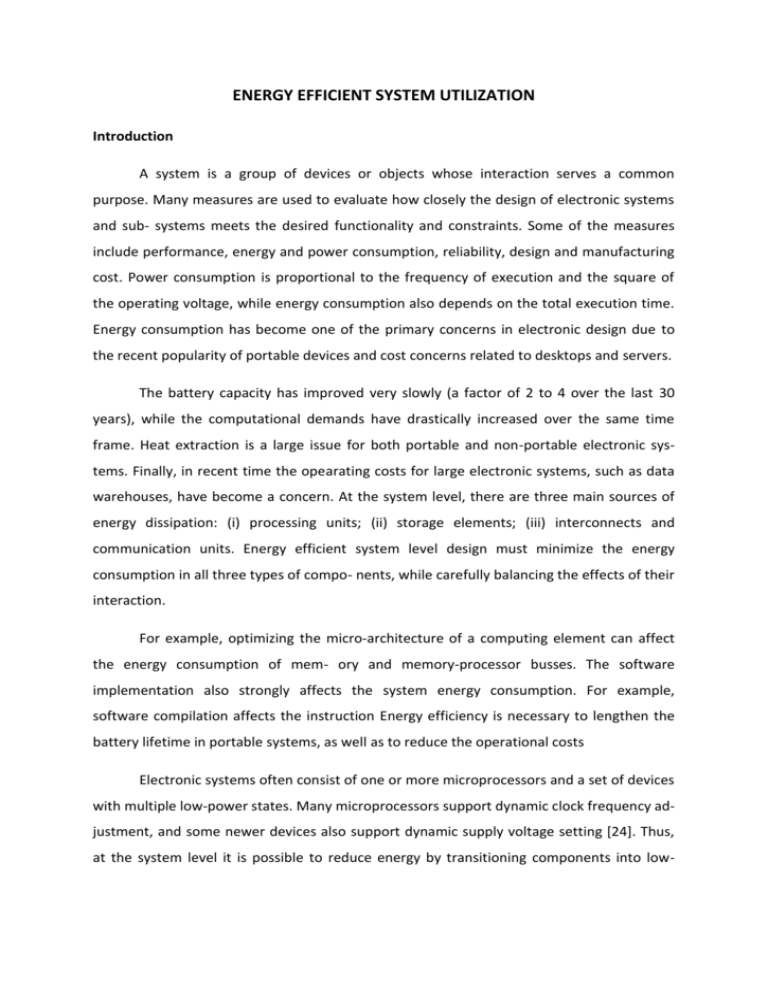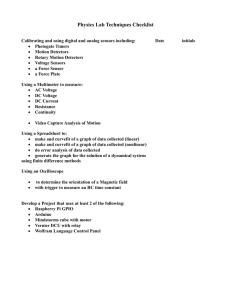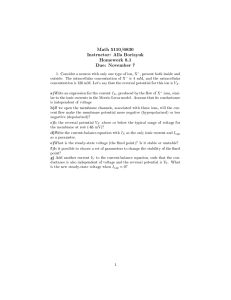energy efficient system utilization
advertisement

ENERGY EFFICIENT SYSTEM UTILIZATION Introduction A system is a group of devices or objects whose interaction serves a common purpose. Many measures are used to evaluate how closely the design of electronic systems and sub- systems meets the desired functionality and constraints. Some of the measures include performance, energy and power consumption, reliability, design and manufacturing cost. Power consumption is proportional to the frequency of execution and the square of the operating voltage, while energy consumption also depends on the total execution time. Energy consumption has become one of the primary concerns in electronic design due to the recent popularity of portable devices and cost concerns related to desktops and servers. The battery capacity has improved very slowly (a factor of 2 to 4 over the last 30 years), while the computational demands have drastically increased over the same time frame. Heat extraction is a large issue for both portable and non-portable electronic systems. Finally, in recent time the opearating costs for large electronic systems, such as data warehouses, have become a concern. At the system level, there are three main sources of energy dissipation: (i) processing units; (ii) storage elements; (iii) interconnects and communication units. Energy efficient system level design must minimize the energy consumption in all three types of compo- nents, while carefully balancing the effects of their interaction. For example, optimizing the micro-architecture of a computing element can affect the energy consumption of mem- ory and memory-processor busses. The software implementation also strongly affects the system energy consumption. For example, software compilation affects the instruction Energy efficiency is necessary to lengthen the battery lifetime in portable systems, as well as to reduce the operational costs Electronic systems often consist of one or more microprocessors and a set of devices with multiple low-power states. Many microprocessors support dynamic clock frequency adjustment, and some newer devices also support dynamic supply voltage setting [24]. Thus, at the system level it is possible to reduce energy by transitioning components into low- power states (dynamic power management) and by changing the frequency and voltage level of the microprocessor (dynamic voltage scaling). Energy Efficient System Design Energy efficient system design requires the reduction of energy consumption in all portions of a system. System level design of hardware is concerned with selection and organization of the components. Software design is concerned with definition and selection of operating system, application software and compilers. The interaction between software and hard- ware components can greatly affect the energy consumption at the system level. Thus it is of critical importance to have a fast and easy way to evaluate energy consumption of the whole system during the design stages of software and hardware











